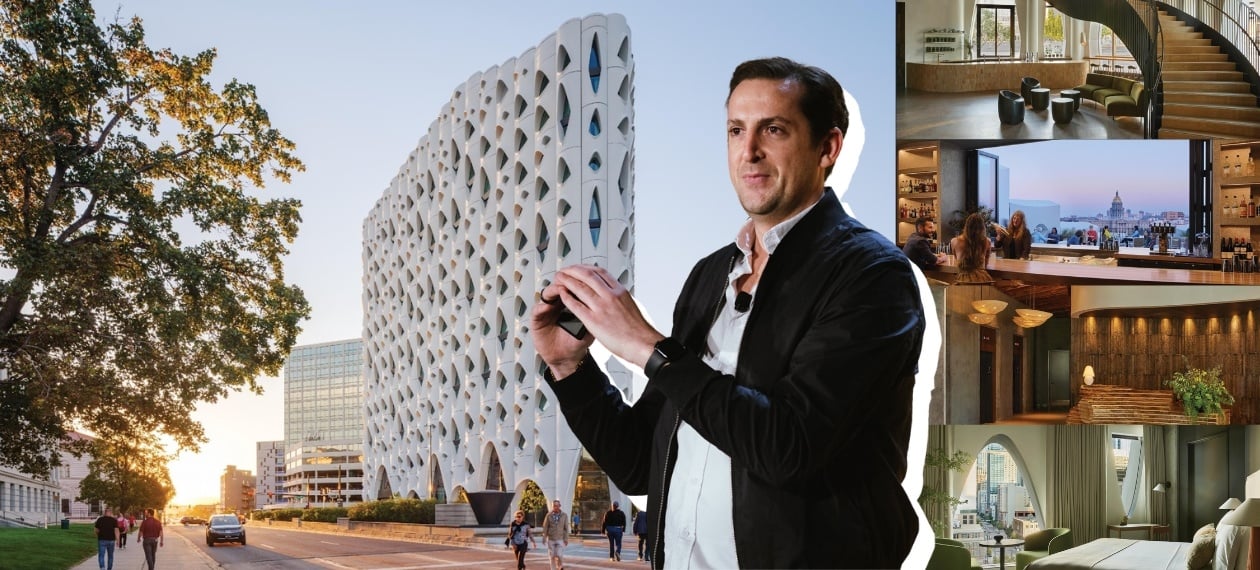For hotel owners/operators looking to optimize their bottom lines, taking new properties from concept to completion is a race against the clock that depends on the coordinated efforts of a range of factors and players (architects, contractors, etc.). At HotelSpaces, development and design leaders offered their thoughts on the best ways to make sure deadlines are met and shared the top challenges they face in achieving this goal.
The key factors are “budget and time,” said Himank Goswami, (former) Sr. Manager of Architecture & Technical Services for Emaar Hospitality. “Timelines are definitely one of the biggest challenges along with budget constraints. What we’ve seen in the past is that there are certain projects that get delayed because they are over budget,” he said. “So the entire project goes into value engineering and then there are a couple of months delay in opening the project. The other kind of delay usually happens because suppliers do not deliver on time.
Build Offsite to Save Time
Architect and TV Host Danny Forster is an outspoken advocate for modular design. He believes once the industry begins to accept this innovation, it will be a win/win for developers, guests and contractors.
“The fundamental logic behind a modular building is speed. The idea is that you begin construction offsite while you’re still designing. Thereby picking up all that time,” said the architect of the world’s tallest modular hotel, the 26-story AC Hotel NoMad in NYC. With modular, timelines shrink during construction too, assuming that things go to plan. “The speed of modular versus building the traditional way is dramatically different, (though) the coordination has to be absolutely perfect to mitigate problems. The very logic behind modular is going faster,” Forster added.
Concord Hospitality is developing the AC NoMad. “With modular, once we push the ‘go’ button it moves a lot quicker than conventional building. Depending on the size, a modular project should be open two or three months earlier (than a similar project using traditional construction methods),” said Steve Kohn, Concord’s Director of Development.
Livit CEO Benjamin Calleja agrees that building onsite slows the process. “A lot of the projects we do are actually built offsite so you can take advantage of industrial processes rather than having contractors on site doing everything. And that really speeds up when you’re going into different markets,” he said. Livit provides research, strategy as well as design services for (predominantly) food and beverage clients.
The Labor Challenge
A strong global economy translates into a competitive market for the best architects, designers, contractors, subcontractors and other strong vendors, industry leaders agreed.
“We get quick wins, quick fails, adjust accordingly and then move forward”
“The world’s in a great spot, right? So it’s hard to find good labor. We’re paying a little bit more and we’re bringing in talent,” says Hilton’s SVP of Operations and New Project Development Randy Gaines. “Bringing a project to market is about cost, scope and schedule. So we’re doing a lot around preplanning and collaboration with our owners and stakeholders. With proper pre-planning we’re bringing these things to market as fast and as quickly as possible.”
When asked about what’s slowing speed to market, President of BPR Properties Birju Patel gets to the point. “If we’re talking about new development, it’s labor. If we don’t have labor there’s little we can do. We’ve still got to build the building.”
Fail Faster, Adjust Accordingly
David Breeding, VP of Design and Architecture for IHG agrees that a booming economy makes finding A-list contractors and design firms difficult. “One of the things we’re starting to do from a design perspective is look at virtual reality; we spend quite a bit of time showing our owners and stakeholders VR of the spaces,” he said.
IHG is focused on speeding up the development process, emphasizing experimentation through prototype designs. a “We get quick wins, quick fails, adjust accordingly and then move forward,” he emphasized.
Teamwork
Finally, the hotel leaders agreed it’s critical to build strong, collaborative relationships with all parties involved in the design and construction process. “The most innovative thing we do to bring projects together more quickly is about building the right team. And that goes to the design professionals, architects, engineers, general contractors, hospitality and people….and first and second tier subcontractors,” said David Black, Managing Director of JLL.
“We try to bring the team on early on behalf of the owner and we really work together collaboratively to make sure we’re prepared. Good beginnings bring good endings,” he said.
----------------------------------------------------------------------
Join us at HotelSpaces '19 taking place October 6-8 in Austin, TX as we explore this topic further. Request an invite here.

Posted by
Join us at HotelSpaces!
A One of a Kind Retreat for Hotel Development, Design & Construction Leaders.
Oct 25 - 27 | Fort Lauderdale, FL
Learn More

.png)


-3.png)
.png)


Comments